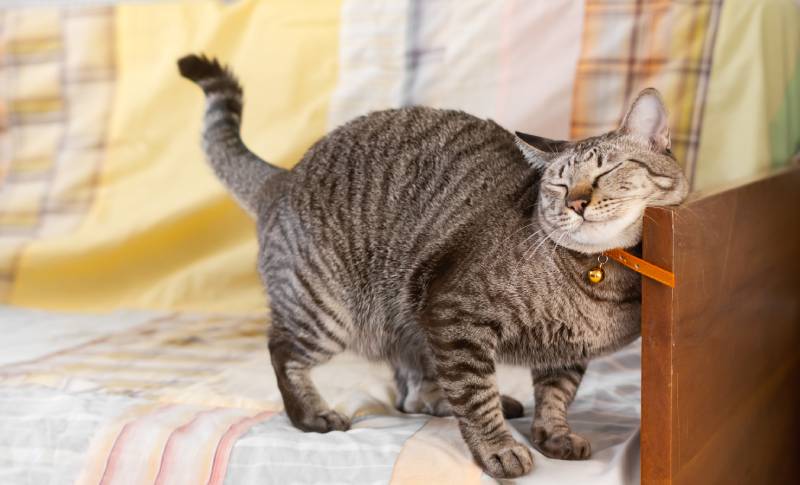How to Stop My Cat from Bullying My Other Cat: Vet-Approved Solutions
Updated on
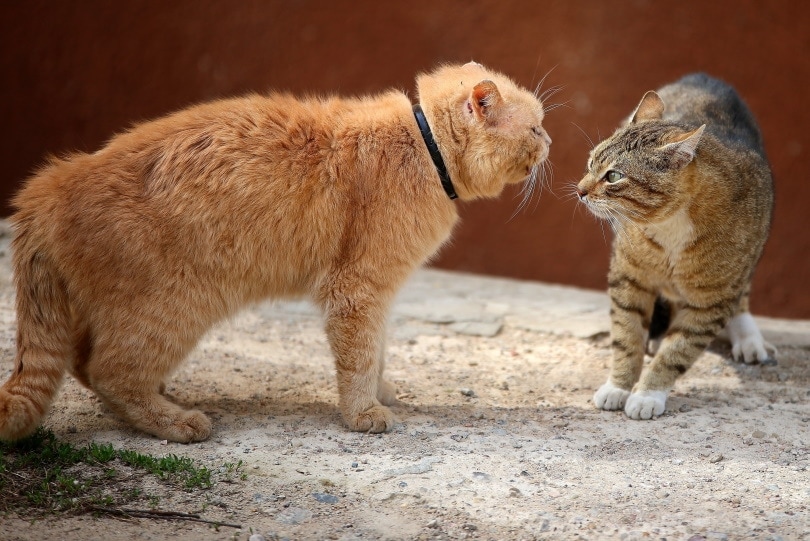
Owning multiple cats definitely comes with its set of challenges. One of the challenges is that no matter how much we hope they will, sometimes our cats just don’t get along. One cat may be bullying another cat, which can affect the bullied cat’s quality of life negatively.
Cats that are bullies can block other cats from getting to the food and water bowl or the litter box, and they may even start fighting other cats for seemingly no reason. If this sounds like a situation that’s happening with your cats, don’t worry. We’ll share with you some helpful tips regarding how to stop your cat from bullying another cat.
Is It Bullying or Playfulness?
Before we get into how to stop a cat from bullying another cat, ask yourself is your cat really bullying another cat, or are they just playing together? Cats fight with each other as a form of stimulation or play, and although it looks like bullying, it’s not. Knowing the difference between the two can help you determine whether or not you do, indeed, have a bullying problem on your hands.
The main difference between bullying and play fighting is that bullying is typically one-sided and involves a dominant cat being overly aggressive. Play fighting can be a little aggressive with some hissing, but the difference is that you won’t notice changes in their normal behavior if they are just playing.
For example, cats that are playing may go from cuddling one second to play-fighting the next and then back to cuddling. A cat being bullied may seem fearful or jumpy when around the other cat or hide or try to avoid the cat as much as possible.
Physical Changes
Look for changes in the cats’ behavior while the fighting is going on. Cats that are playing may take turns biting and clawing at each other without the intent of causing injury. They may also appear to be wrestling.
But if only one cat seems to be biting and clawing at the other, and it seems like he’s trying to harm the other cat intentionally, it could be a sign of bullying. Other signs of a cat being bullied include his ears being turned back while fighting or his tail puffing up. Loud hissing or being chased until they hide is another sign that your cat may be being bullied.
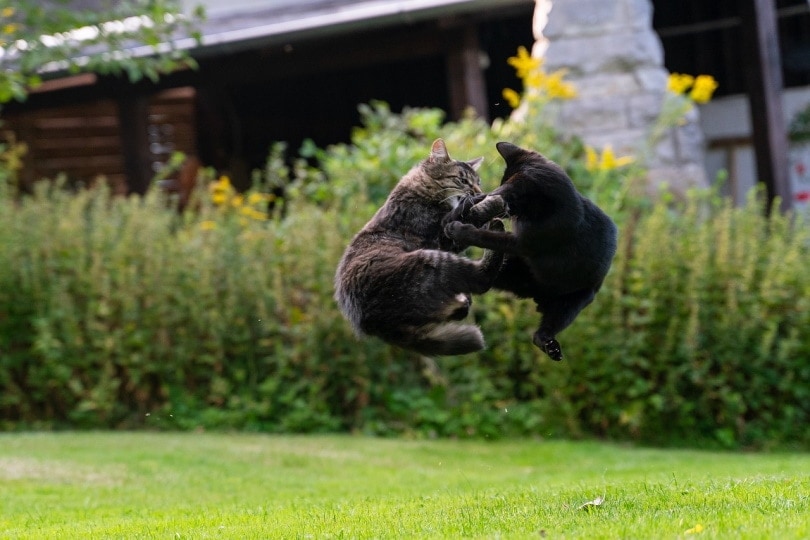
The 4 Reasons Some Cats Bully Other Cats
It’s true that some cats’ personalities don’t mix, which could lead to bullying and aggression on one cat’s part. But, most of the time, you can fix a bullying problem if you can get to the root of the issue.
There are many reasons why your cat may bully another cat. Sometimes, it’s due to a personal issue with the cat, but other times, your cat may be trying to tell you something. Here are some of the problems your cat may be experiencing that are causing him to bully another cat.
1. Territory
Cats are known for being territorial creatures, regardless of whether they are male or female. That’s why it shouldn’t come as a surprise that territory is one of the leading causes of aggression and bullying in cats.
One of your cats being territorial is more likely to happen if he’s been the only cat in the house for a while, and then another cat is brought in. Your cat may be bullying the new cat to let him know that he was here first and that this is his space. It’s not uncommon for this to happen, especially if the two cats weren’t properly introduced to one another.
However, let’s say that you have two cats, one that is an adult and one that is a kitten. The adult cat may not bully the kitten, but once the kitten grows into an adult, that’s when the bullying starts. It’s possible that your older cat didn’t see the kitten as a threat to his territory until the kitten grew up, so he’s bullying him to let the younger cat know that this is still his territory.
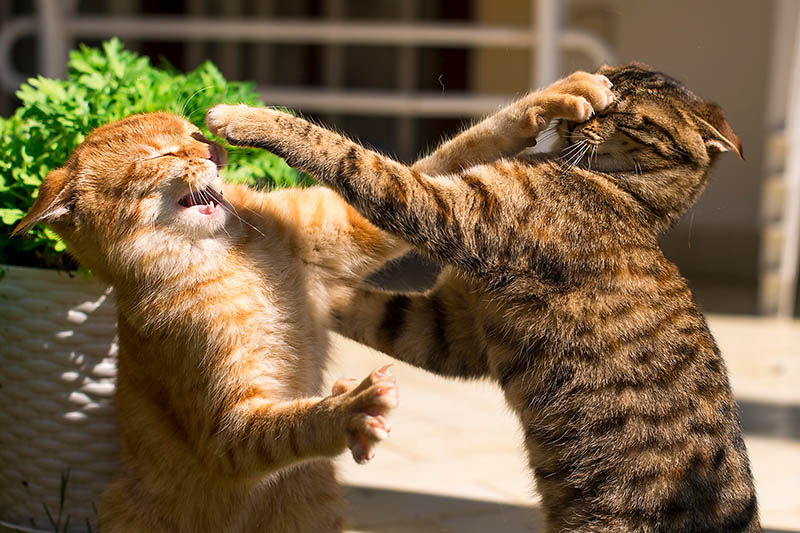
2. Sharing Resource
Another cause of bullying in cats could be the cats having to share resources, such as food, water, litter, or a bed. Although many cats will get along just fine having to share water and a bed, the food and litter are a different story.
Let’s start with litter first. Cats mark their territory using the litter box, so if more than one cat uses the same litter box, it could lead to aggression as the cats become stressed over whose space it is. This could even lead to the bully cat blocking your other cat from using the litter box, resulting in him going elsewhere.
Some cats also don’t like to share what they feel is their food. If your cats share one big bowl of food, it could lead to aggression over whose food it actually is and result in one cat withholding from another.
The same is true for other resources as well, such as sleeping spots, toys, etc. Sometimes, it just depends on the personality of the cat and whether or not he likes to share, but more often, it’s because one cat doesn’t feel like there are enough resources to go around, so he’s bullying another cat to assert his dominance and control that resource.
3. Attention
Cats also bully others as a result of a lack of attention. Just like children act out when they don’t get enough attention, cats do too. One cat may bully another cat if he feels like that cat is getting more attention than he is.
Another reason could be that there is a lack of enrichment or mental stimulation to keep your cat happy. Your cat is bored, so he’s turning his attention to bullying another cat to keep him mentally stimulated or entertained.
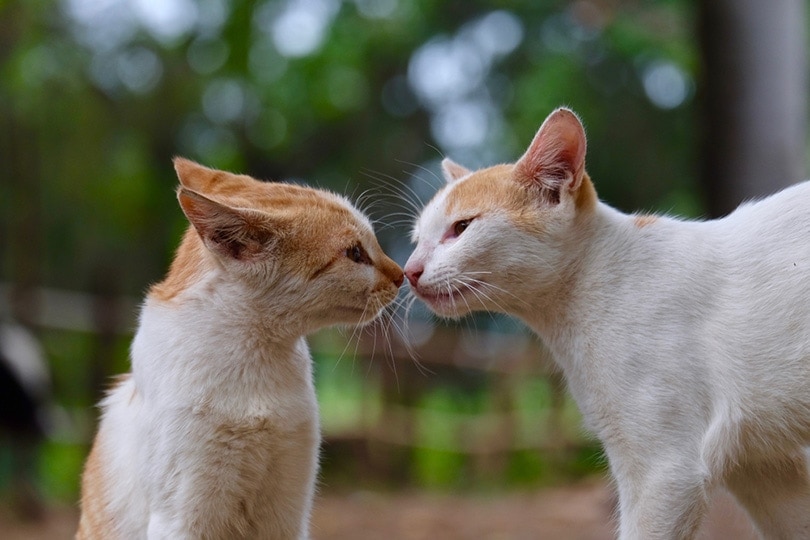
4. Gender
If your cats are of the same sex, either two males or two females, bullying could occur due to them reaching sexual maturity. This is especially true if the cats aren’t fixed, or you have a cat of the opposite sex in the home.
For example, two male cats may be trying to compete over who gets the female cat. If one of the male cats is bigger than the other, it may lead to bullying on the part of the larger cat in order to get the smaller cat to back off.
The 4 Ways to Stop Your Cat from Bullying Your Other Cat
If you’ve determined that one of your cats is being bullied, don’t worry. Here are some solutions that you can try to help your cats live happier in your home so that you don’t have to give one of them up.
1. Separate and Reintroduce Them
Cats benefit from a period of separation before being reintroduced to each other properly. This is an excellent solution to one cat feeling territorial, especially if he’s used to being the only cat in the household or the cats weren’t appropriately introduced in the first place.
Separating your cats often involves keeping them in separate rooms with a closed door in between them. Allow each of them to get used to the other cat’s scent by allowing them to sniff something that the other has touched, such as a bed, blanket, or toy.
Finally, allow them to visit with each other for short periods under your supervision. If you notice any signs of aggression or discomfort, remove the cats back to their separate spaces. Continue these supervised visits, making them longer each time as long as there are no signs of aggression. If this is done properly, your cats should eventually warm up to each other. Additionally, utilizing a feline pheromone diffuser like Feliway may also help with this reintroduction.
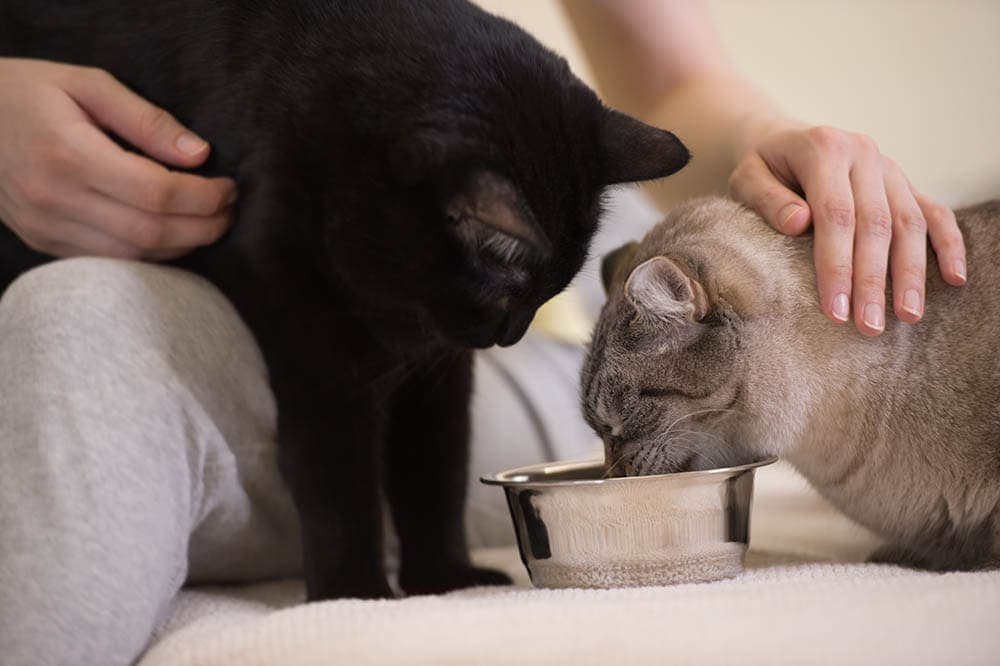
2. Provide Separate Resources
If one cat is bullying another, make sure that you provide separate resources for them if it appears that one cat is withholding resources. For example, putting food in different bowls gives each cat his own food so that there’s no need to fight over it.
Having multiple litter boxes can also reduce bullying so that each cat has a place to mark with their own scent. The general rule with cats is that you should have one litter box for each cat plus one extra. Following this rule should encourage your cats to use their own litter box and prevent them from going anywhere else.
If both cats are in the same room together, make sure you share your attention with each one. This can prevent one cat from bullying another due to lack of attention, as they will both feel equally loved and stimulated. Having lots of toys, activities, and vertical spaces for your cats can help them feel more stimulated as well.
4. Spay and Neuter
If you have more than one cat, regardless of whether or not they are of the same gender, be sure to have them spayed or neutered. Neutering is one of the most effective ways to prevent aggressiveness in cats, which can reduce the chances that one of your cats will start to bully the other one and end up injuring him in the process.
- Seek veterinary consultation. If you cannot resolve the conflict between two cats by making the mentioned changes at home, it’s time to seek help from your veterinarian. Both cats should be examined to make sure that there is not an underlying medical cause for aggressive behavior. Your vet may recommend short-term anti-anxiety medications or even long-term behavior-modifying drugs, depending on the situation and severity. You can even ask for a referral to a board-certified veterinary behaviorist.
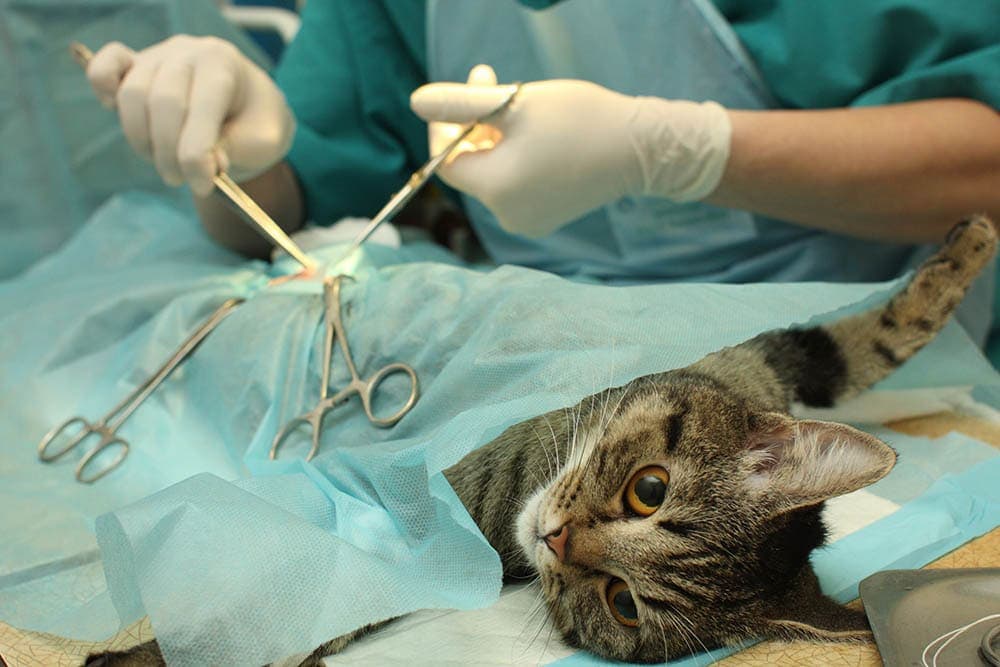
Final Thoughts
One cat bullying another cat can be a serious problem, especially if a cat gets injured in the process. If you have a bullying problem with your cats, then hopefully, we were able to provide you with plenty of helpful information as well as solutions to help you fix the problem. By trying the solutions in this guide, you should be able to help your cats coexist in your home more peacefully and see each other as equals instead of a threat.
Featured Image Credit: Vshivkova, Shutterstock




